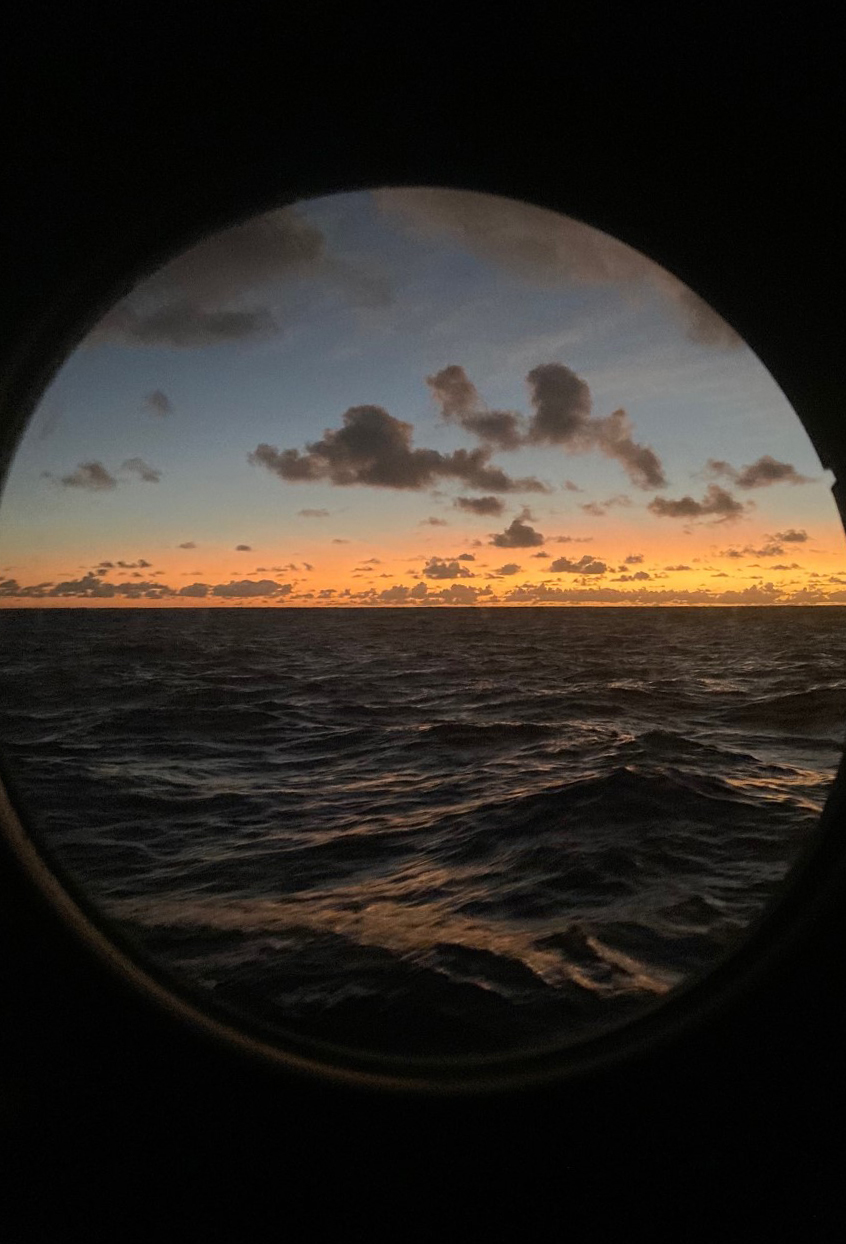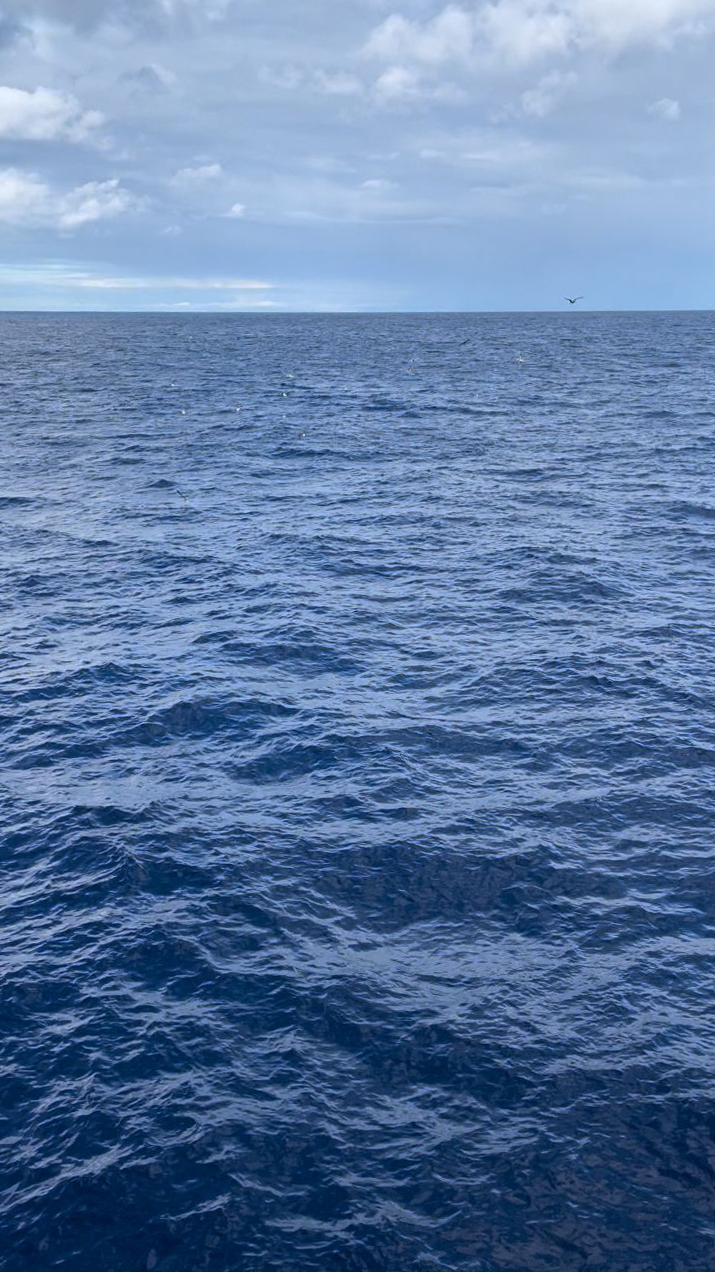Blue… that is all we see. And some white clouds and some white when waves break. The lookout and the buoy watch onboard Lehmkuhl are constantly scanning the ocean to keep an eye for passing ships or people overboard. This means that at all times someone is looking out over the deep blue ocean.
Still, we have seen nothing but ocean and sky since we left Fiji traveling towards Tonga.

We have now begun our journey back towards Suva harbour and we do not have many days left at sea. Other than the 130 people onboard the ship, no other life has been observed. Today feels like any other day onboard. I am sitting on deck about to read through our blogs.
While waiting for everyone to get ready, I walk over to look out at the peaceful sea. At first glance, the ocean looks quiet as usual. I was recently told, ‘The Pacific Ocean’ means the peaceful ocean. Indeed, it is a fitting name for this flat sea.
Suddenly, the water surface is broken. Splashes occur. A group of birds are circling around. One of them turns and dives headfirst into the water. Another big splash. Gasping and pointing I make it obvious to the others that I am seeing something. Finally!
The birds keep circling and one by one dives down into the water. They are looking heavy and wobbly when they try to take off from the water again. Something jumps out of the water, spinning around and back into the ocean. Birds feeding on a school of fish from above while some tunas are hunting the school of fish from below, pushing the school of fish up towards the surface. A feeding frenzy is happening - an amazing sight!
But we hope for more. We keep glaring at the ocean hoping that the event could attract some whales or sharks.
It is perplexing how abruptly life appears from out of nowhere. Why is there generally so little life in the Pacific Ocean? It comes down to the amount of nutrients in the water. Particularly phosphate and nitrogen are essential ingredients for a productive ocean, and these often enter the ocean as runoff from land, making most of the Pacific Ocean appear dessert-like. These nutrients are important for the phytoplanktonic diet.
Phytoplankton are small plant-like organisms capable of doing photosynthesis. Plenty of light, phosphate, and nitrogen means thriving phytoplankton, and thus, a productive sea, as phytoplankton are the start of the food chain. These small organisms are the backbone of the ocean.
Productive hotspots are areas with a lot of nutrients and thriving phytoplankton, which in turn attract bigger predators such as fish, whales, sharks, and birds. So, every time you see circling birds and splashes in the water, be on the lookout, something bigger might come by.

On this peaceful sunny day in the Pacific there is finally sign of life! But this exciting feeding event does not seem to attract any whales or sharks today. We are hopeful that as we get closer to shore, we might see something more.

